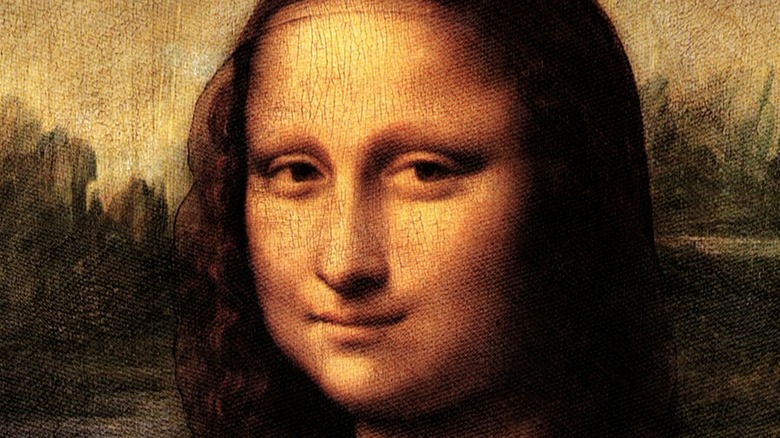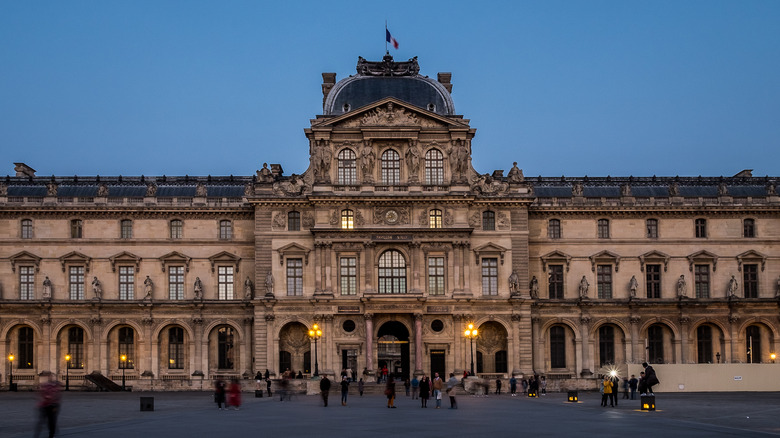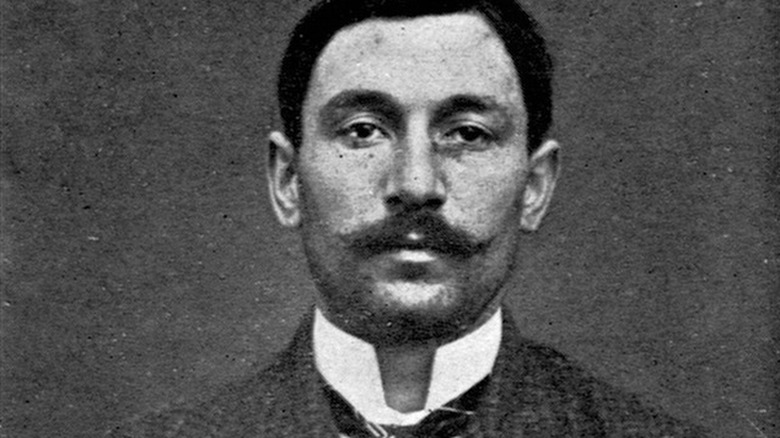Who Was The Man Who Stole The Mona Lisa?
When it comes to famous paintings, Leonardo da Vinci's "Mona Lisa" is arguably one of the most famous. Da Vinci worked on the painting sometime during the period between 1503 and 1519. Britannica states that the painting was found in da Vinci's studio after he died in 1519. After da Vinci's death, the painting became part of King Francis I's royal collection, and it hung exclusively on the walls of French palaces until the French Revolution. After the revolution, it was stashed in a warehouse until Napoleon Bonaparte rose to power and placed it on the wall of his palace bedroom (via PBS).
In 1804, the "Mona Lisa" eventually found a resting place in the Louvre, where it was moved only a few times: for protection during the Franco-Prussian War and World War II, and once by the hands of a thief who managed to keep it hidden from view for two years, according to Artstor.
Vincenzo Perugia worked at the Louvre
One might think that only an accomplished thief could abscond with the "Mona Lisa," but that wasn't the case with Vincenzo Perugia, according to Historic Mysteries. Perugia was an aspiring artist whose profession was painting houses, according to Vanity Fair. He also worked at the Louvre for some time. Some accounts state that he worked at the museum for a few months (per Vanity Fair) while others claim he worked there for several years (per Saturday Evening Post). Either way, his employment provided him the perfect opportunity to steal the painting.
Perugia, familiar with the Louvre's layout and schedule, knew the museum was closed for maintenance on Mondays. On Sunday August 20, 1911, he hid in a broom closet overnight and the following morning, he slipped into a worker's smock and entered the gallery where the "Mona Lisa" was kept. He waited until the gallery was empty, removed the painting from the wall, covered it with his smock, and left (via the Saturday Evening Post).
Perugia said he acted out of patriotism
Now that Vincenzo Perugia had the "Mona Lisa," he didn't know what to do with it. Historic Mysteries reports that he simply put it in a trunk until he formulated a plan. The trouble was that he couldn't sell the painting because news that it was stolen traveled fast. After two years, he contacted Florence art gallery owner Alfredo Geri. Perugia said that he wanted to return the "Mona Lisa" to its country of origin. Geri convinced Perugia to leave the painting with him. When Geri and a colleague confirmed the painting was authentic, they called officials, who then arrested Perugia.
During his trial, Perugia said his motivation for stealing the masterpiece was patriotic. He claimed he wanted to return the "Mona Lisa" to da Vinci's homeland under the erroneous belief that Napoleon Bonaparte had stolen it, per the Saturday Evening Post. Author Seymour Reit, who wrote "The Day They Stole the Mona Lisa," said that Perugia became something of a public hero, and while he awaited trial, he received love letters, bottles of wine, and cakes. A psychiatrist deemed Perugia "intellectually deficient," and as a result, the court sentenced him to seven months in jail, of which he had already served eight while awaiting his day in court (via PBS).


